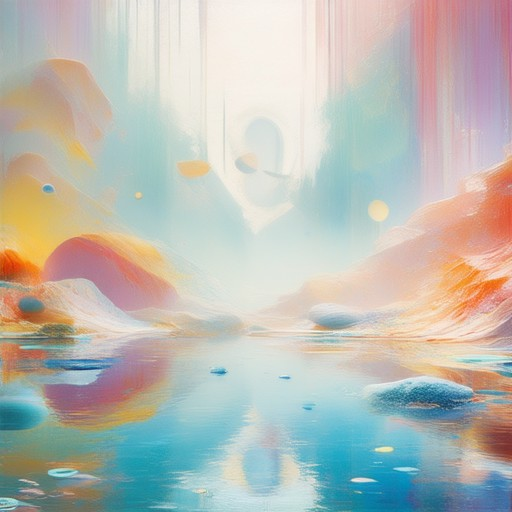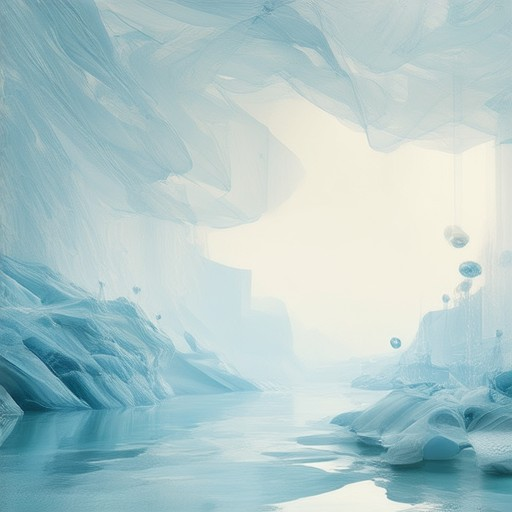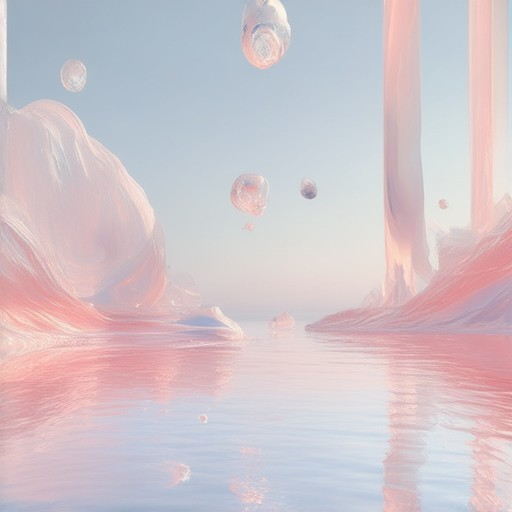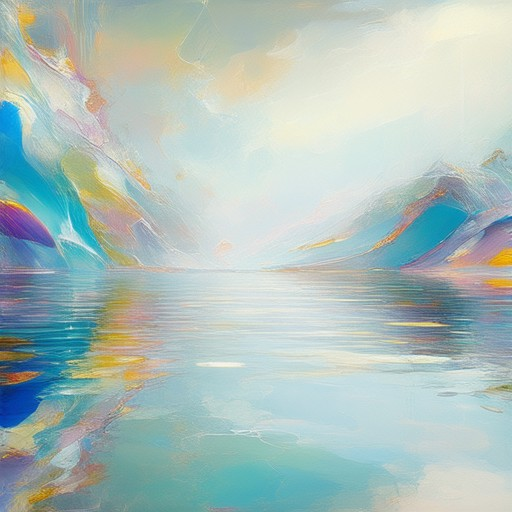Embarking on the journey of art can be both exhilarating and overwhelming, especially when navigating the vast landscape of techniques, styles, and creative expression. For many, the challenge lies in finding consistent inspiration, mastering technical skills, and discovering a personal artistic voice. Whether you’re a seasoned artist looking to refine your craft or a complete novice eager to dip your toes into the world of art, understanding the fundamental principles can make all the difference. In this article, we’ll explore the 5 C’s of art—Creativity, Composition, Color, Contrast, and Confidence—that serve as a roadmap for unlocking your potential and elevating your artistic creations. From practical tips to innovative ideas, we’ll delve into how to overcome creative blocks, experiment with different mediums, and cultivate a mindset that embraces the joy of art-making. Let’s embark on this visual adventure together, where every stroke of the brush and every thought in your mind brings your artistic vision to life.
Key Takeaways
- Refine Your Art Through Consistent Practice and Mastery of Fundamentals.
- Develop a Unique Art Style by Exploring Media and Reflecting Your Personality.
- Capture Realism with Precision in Drawing and Shading Techniques.

The 5 Cs of Art
The concept of the “5 Cs of Art” is often used to describe the essential elements that define the art world and its practices. These Cs provide a framework for understanding the dynamics of art creation, appreciation, and cultural impact. Below is a detailed breakdown of each component:
- Collection : A collection refers to the gathering and ownership of art pieces. Personal collections allow individuals to curate their own unique showcases, while public collections, such as those in museums, preserve and display artwork for broader access. Digital platforms have made collecting art more accessible, enabling people to build virtual collections and explore diverse artistic movements.
- Community : The art community encompasses artists, collectors, dealers, critics, and institutions. Online forums, social media groups, and art fairs have created vibrant spaces for artists to connect, share ideas, and collaborate. These communities play a crucial role in fostering creativity and supporting emerging talent.
- Culture : Art is deeply intertwined with cultural identity. Different cultures have unique art forms, traditions, and values that shape the creative landscape. The influence of globalization has led to cross-cultural exchanges, blending styles and inspiring new artistic movements. Understanding cultural contexts is essential for appreciating art authentically.
- Collaboration : Artistic collaborations occur between individuals, organizations, and even across different disciplines. Partnerships between artists and institutions, for example, can lead to groundbreaking exhibitions and projects. Such collaborations not only enrich the art scene but also provide opportunities for shared learning and innovation.
- Creativity : At the core of art lies creativity—the ability to think innovatively and express ideas visually. Techniques, tools, and technologies evolve over time, offering new avenues for artists to explore their craft. Creativity is what drives the art world forward, pushing boundaries and challenging conventions.
By focusing on these five Cs, we gain a holistic view of the art world—a world rich in diversity, history, and continuous transformation. Whether you’re an artist, collector, or enthusiast, understanding the 5 Cs of Art enriches your engagement with the medium and opens doors to new possibilities.
How Do I Get Good Art Ideas?
To spark creativity and find inspiring art ideas, consider these approaches:
- Explore Museums and Galleries : Visit local museums or galleries to see diverse art styles and themes. This exposure can jumpstart your imagination and provide unique perspectives.
- Sketch Observations : Spend time observing everyday objects or scenes. Sketching helps capture details and sparks creative ideas.
- Experiment with New Media : Try different art materials or mediums. The texture and feel can lead to unexpected discoveries.
- Study Great Artists : Analyze works by masters like da Vinci, Van Gogh, or contemporary artists. Their techniques and subject choices can inspire your own style.
- Engage with Art Communities : Join forums, social media groups, or local art classes. Discussing ideas with peers can offer fresh insights and challenges.
- Set Personal Challenges : Create themed art projects or self-portraits to push your boundaries and explore new concepts.
- Embrace Failure as Learning : Don’t fear mistakes. Every unsuccessful attempt brings you closer to finding your unique style.
By combining observation, experimentation, and study, you can unlock a wealth of artistic ideas and grow as an artist. https://artfulljourney.com/

The 7 Things in Art
The art world is rich with concepts and principles that define what makes something artistic. Below are the 7 fundamental elements of art, each playing a crucial role in creating meaningful and impactful artwork:
- Line : A continuous mark or edge that defines shape, form, and direction. Lines can be straight or curved and are essential in creating contrast and movement.
- Shape : The outline or form of an object, created by lines. Shapes can be geometric (like circles, squares) or organic (like mountains, waves).
- Form : Three-dimensional objects or figures, giving depth and volume to art. Form often relies on shape and line to convey mass and space.
- Space : The area around or between objects, creating depth and dimension. Negative space (empty space) can be just as important as positive space (filled areas).
- Value : The light and dark areas in a work, creating contrast and helping to guide the viewer’s eye. Understanding value is key to mastering composition.
- Color : The element that conveys emotion and mood, often used to unify different elements of a work. Colors can be warm, cool, vibrant, or muted.
- Texture : The surface quality or feel of an object, achieved through techniques like brushing, shading, or the use of materials. Texture can be smooth, rough, or abstract.
These elements work together to create art that communicates ideas, emotions, and stories. By mastering these principles, artists can express themselves more effectively and create pieces that resonate with viewers.
Explore more about these art elements and how to apply them in your own creations by visiting our Art Elements Guide . Discover tips, tutorials, and resources to elevate your artistic skills today!

How to Make Your Art Perfect
To create perfection in your artwork, focus on refining your skills and understanding the fundamental principles of art. Here’s a step-by-step guide to help you achieve this:
- Understand Your Style :
Begin by identifying your unique artistic style. Experiment with different mediums and techniques to find what resonates with you personally. Consistency in your style will help others recognize and appreciate your work. - Master the Basics :
- Sketching : Practice daily to develop your observational skills. Sketching helps in capturing shapes, proportions, and perspectives accurately.
- Composition : Learn to arrange elements in your artwork in a visually pleasing manner. Use leading lines, balance, and symmetry to guide the viewer’s eye.
- Color Theory : Understand how colors interact. Use complementary colors for vibrant works and analogous colors for moodier pieces.
- Practice Perspective and Shading :
- Perspective : Study real-world environments to understand how light and shadows affect objects. This will give your artwork a three-dimensional feel.
- Shading : Use shading to create depth and dimension. Start with light shadows and gradually build up darker tones for contrast.
- Refine Details :
Pay attention to small details in your artwork. This is where your personal touch shines. Add textures, patterns, or intricate designs to make your piece stand out. - Experiment with Mediums :
Explore different materials and tools. Whether it’s oil paints, watercolors, or digital tools, try combinations to see how they can enhance your work. - Seek Feedback :
Share your artwork with trusted friends or mentors who can provide constructive criticism. Their insights can help you identify areas for improvement. - Stay Inspired :
Keep a journal of your favorite artworks, quotes, or moments that inspire you. Review it often to reignite your creativity and keep your motivation high. - Be Patient and Persistent :
Artistic mastery takes time. Don’t get discouraged by mistakes. Embrace the process, learn from your errors, and keep experimenting.
By following these steps, you’ll continuously improve and create art that truly reflects your unique vision. Remember, practice makes perfect, and every stroke brings you closer to your artistic goals.
How to Develop a Unique Art Style
Developing a personal art style is a journey of self-discovery and experimentation. Here’s a structured approach to help you find and refine your artistic vision:
- Explore Different Mediums and Techniques
- Experiment with various art supplies, such as watercolors, oils, acrylics, or digital tools.
- Study the properties of different materials and how they can influence your work.
- Schedule Daily Sketches
- Establish a consistent routine to practice drawing and experimenting with ideas.
- Keep a sketchbook to document your progress and explore different themes.
- Analyze Masterpieces
- Study works from renowned artists to understand their techniques and styles.
- Pay attention to elements like composition, color theory, and subject manipulation.
- Experiment with Composition
- Practice arranging subjects in unconventional ways to create dynamic compositions.
- Consider perspective, depth, and lighting to add dimension to your work.
- Reflect on Personal Values
- Think about what inspires you and how you want your art to reflect your personality.
- Identify the messages or emotions you aim to convey through your artwork.
- Seek Feedback and Guidance
- Share your work with peers or join art communities for constructive criticism.
- Attend workshops or online classes to learn advanced techniques and receive feedback.
- Stay Curious and Open-Minded
- Be open to influences from diverse cultures and artistic movements.
- Experiment with new trends and techniques to evolve your style continuously.

How to Draw a Realistic Eye
To draw a realistic eye, follow these simple yet effective steps:
- Start with the Shape : Begin by sketching a circle to represent the eye. This serves as the foundation for the iris and pupil.
- Define the Iris and Pupil : Inside the circle, draw theiris details. Use short, curved lines to create the shape of the iris. Add texture by varying the line thickness and direction. Then, draw the pupil using darker lines towards the center of the circle.
- Add Shading : To give the eye depth, use fine lines to create shadows around the edges of the iris and pupil. This helps in making the eye look more three-dimensional.
- Refine Details : Enhance the appearance by adding small lines radiating from the pupil. These lines should vary in thickness and direction to mimic the natural structure of the eye.
- Final Touches : Lightly shade the area below the eye to give it a subtle depth effect. This can be achieved using soft strokes with a smaller brush or pencil.
By following these steps and practicing regularly, you can master the art of drawing a realistic eye. Remember, patience and observation are key to achieving a natural look.




0 Comments